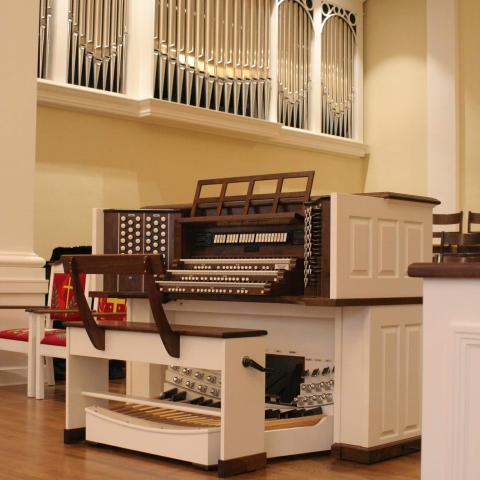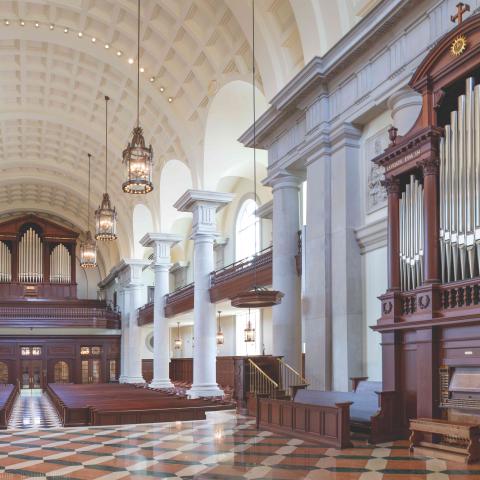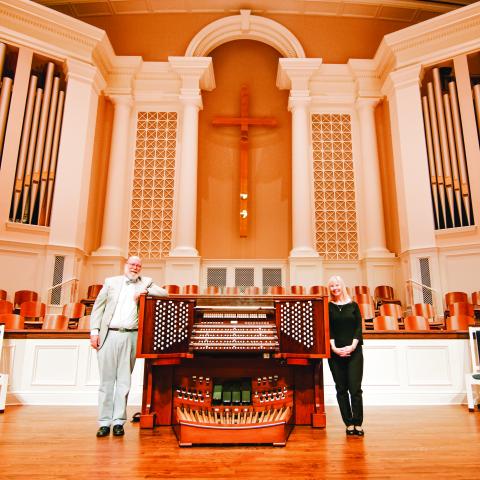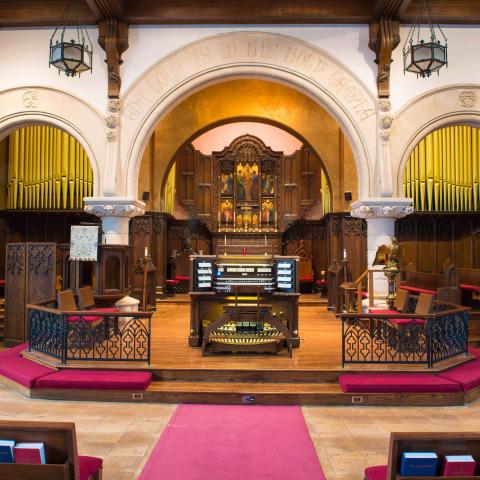
Milnar Organ Company, LLC, of Eagleville, Tennessee, has completed a project at The Community Church of Tellico Village in Loudon, Tennessee. They installed a seven-rank Antiphonal division to an existing Zimmer organ. The Antiphonal Organ was originally part of the Schantz organ at St. John’s Episcopal Cathedral in Knoxville, Tennessee.
The church is a very large building treated heavily with sound absorbing material. There was a significant delay of sound of the organ and choir at the back portion of the church. This delay started just past midway of the room.
The stops on the two main windchests are 8′ Rohrflute, 4′ Octave, 2′ Principal and 1-1⁄3′ Mixture III. The casework was decorated with ornate coverings, all of which had to be removed to match the very modern building. To install the organ on a solid wall, it was necessary to remove half of the 4-inch-thick sound-absorbing material. The 6-inch metal-studded wall gave substantial support to mount the windchests. A room to the side keeps the blower and bellows silent.
The Antiphonal Organ was voiced and regulated standing in the center of the room to balance it with the main organ. The project was consulted with organist Fredrick Pogue and designed by Frank Friemel.
For further information: www.milnarorgan.com.
Other organ builder news:







